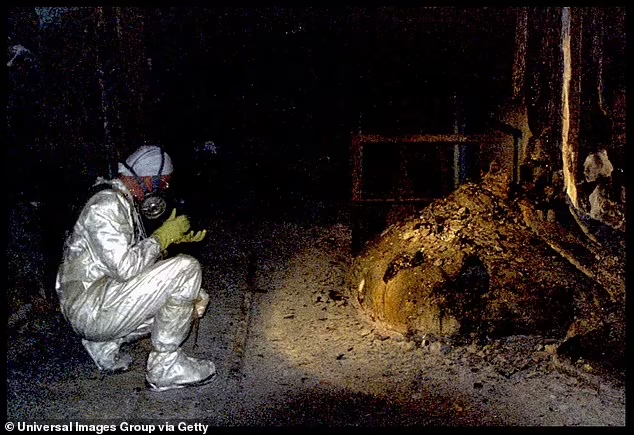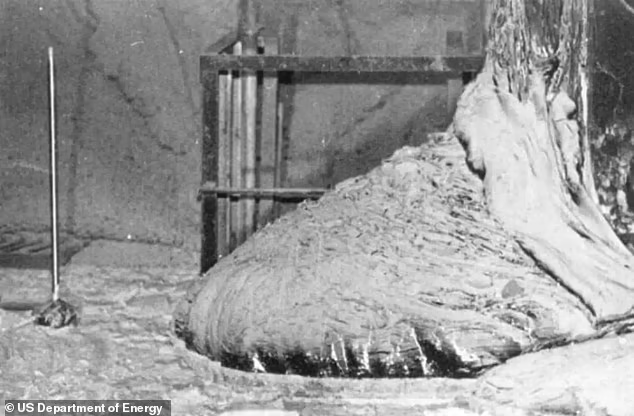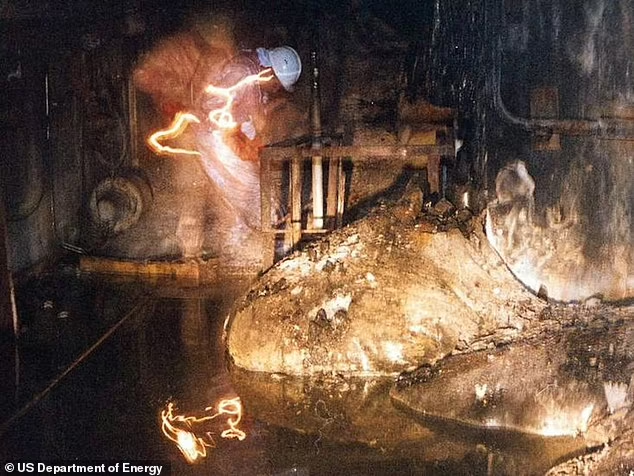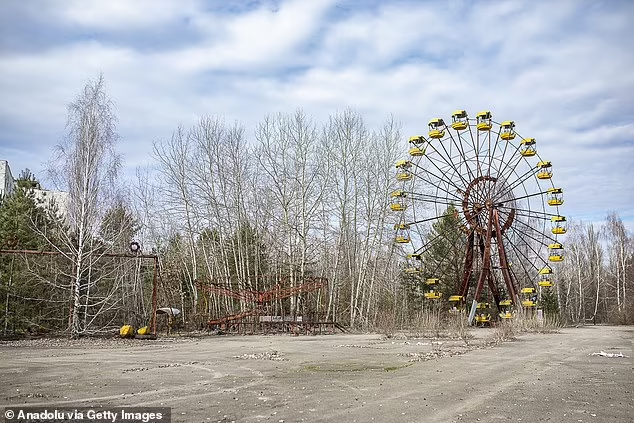Deep beneath the ruins of the Chernobyl Nuclear Power Plant lies an object so deadly that even a brief encounter could prove fatal. Known as the “Elephant’s Foot,” this 2-meter wide lump of solidified lava was formed from the molten core of the reactor during the catastrophic meltdown in 1986. Spending just 300 seconds in its presence would leave you with a mere two days to live.

Due to the intense radiation emitted by the Elephant’s Foot, only a handful of photographs have ever been taken of this lethal curiosity. Even now, nearly four decades after the disaster, stepping into the room housing the object could be a death sentence, and the threat may persist for centuries to come.
On April 26, 1986, Reactor Number 4 at the Chernobyl plant in Ukraine experienced an unexpected power surge. When emergency shutdown procedures failed, temperatures in the core soared. By the time control rods were inserted to slow the reaction, it was too late – the intense heat had already cracked them. As the cooling water vaporized, pressure built up until the reactor itself exploded in the worst nuclear disaster in human history.

That autumn, emergency crews fighting to contain the radiation discovered a chamber beneath the reactor that had become one of the most dangerous places on Earth. The reactor’s heat had been so extreme that the steel and concrete shielding the core had melted into radioactive lava. Contrary to initial beliefs, this material wasn’t actually nuclear fuel from the reactor itself.
As the core reached critical temperatures, it simply melted the materials used to house it, which slowly fell through the reactor floor. As this mixture of sand, concrete, and nuclear fuel forced its way through the pipes and concrete of Reactor 4, it picked up additional components, morphing into a complex mess of radioactive chemicals. When this material finally cooled and solidified, it formed a new substance called corium.

One mass of corium, which had fallen into the steam corridor beneath the reactor, became known as the Elephant’s Foot due to its distinctive shape. In 1986, this blob was emitting an astonishing 10,000 roentgens per hour – roughly 1,000 times the dose required to cause cancer. To put this in perspective, one hour of exposure at that level would be equivalent to receiving four and a half million chest X-rays.
After just 30 seconds of exposure, an individual would experience dizziness and fatigue within a week. Two minutes in the room would cause cells to hemorrhage, and at four minutes, vomiting, diarrhea, and fever would set in. After a mere five minutes, death would be almost certain within two days.
When the clean-up crew, known as “liquidators,” arrived on the scene, they found the Elephant’s Foot still far too radioactive to approach. Using a hastily assembled camera on wheels, they managed to obtain a photograph of the deadly mass.

A decade later, the US Department of Energy, which extensively documented the Chernobyl disaster, secured additional pictures of the Elephant’s Foot. In some of these images, a man in an orange coat, believed to be Artur Korneyev, the deputy director of Shelter Object, can be seen. Korneyev used a time-delayed camera to capture a self-portrait while limiting his radiation exposure.
By this time, the corium blob was emitting about one-tenth of its original radiation levels. Korneyev survived the experience and made hundreds of trips to the disaster site, seeing more of the Elephant’s Foot than any other person. As of 2021, he was reported to be living in Ukraine, though his current status is unknown.
Even with the reduced radiation levels, 500 seconds of exposure would still induce mild radiation sickness, while an hour would prove fatal. The radiation near the Elephant’s Foot remained so high that it interfered with the film used to photograph it.

In 2016, a concrete and steel shelter called the New Safe Confinement was placed over the reactors to prevent further leaks. This structure was reinforced with steel to ensure that uranium dust would not be dispersed in the event of another explosion.
As corium is incredibly rare, having been produced only five times in history, the long-term behavior of the Elephant’s Foot remains uncertain. While the nuclear material is slowly cooling, it is likely to remain dangerous for many years to come, serving as a chilling reminder of the devastating consequences of nuclear disasters.










